In the advanced landscape of sensing technologies, Pulsed Coherent Radar (PCR), Traditional Radar, and LiDAR have unique approaches to object detection and environmental mapping. These technologies not only differ in their operational mechanics and applications but also in their physical size ranges, which can significantly influence their integration and use in various settings. Let's dive deeper into their characteristics, including an added focus on their size dimensions, to understand their operational contexts better.
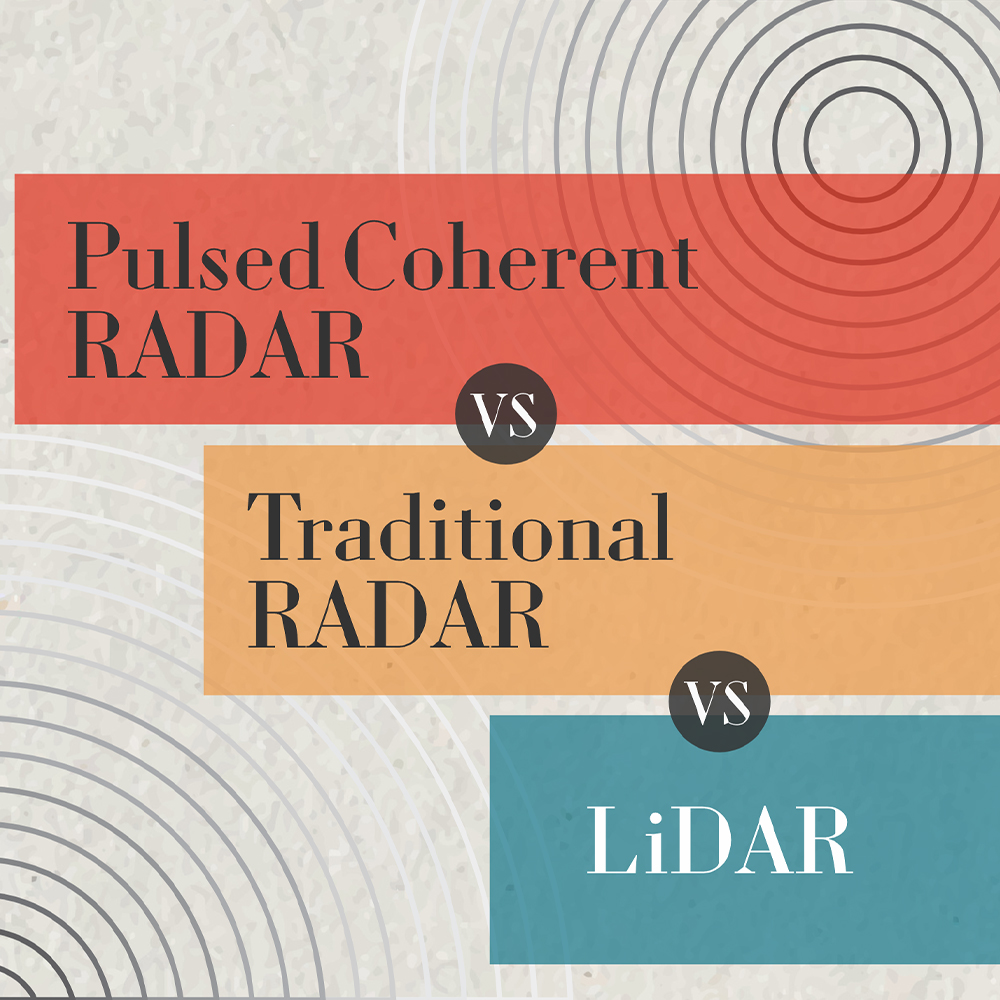
Signal Type: Radio vs Light
The main difference between these technologies is whether they use radio waves or light waves for detection. While both radio waves and light are part of the electromagnetic spectrum
PCR and Traditional Radar: Utilize radio waves for detection, with a nuanced difference in their signal processing.
- PCR employs short, pulsed radio waves, enriched with specific frequency and phase information for enhanced detail.
- Traditional Radar operates with continuous or pulsed radio waves but lacks the detailed phase information found in PCR.
LiDAR: Uses light waves, typically from near-infrared lasers.
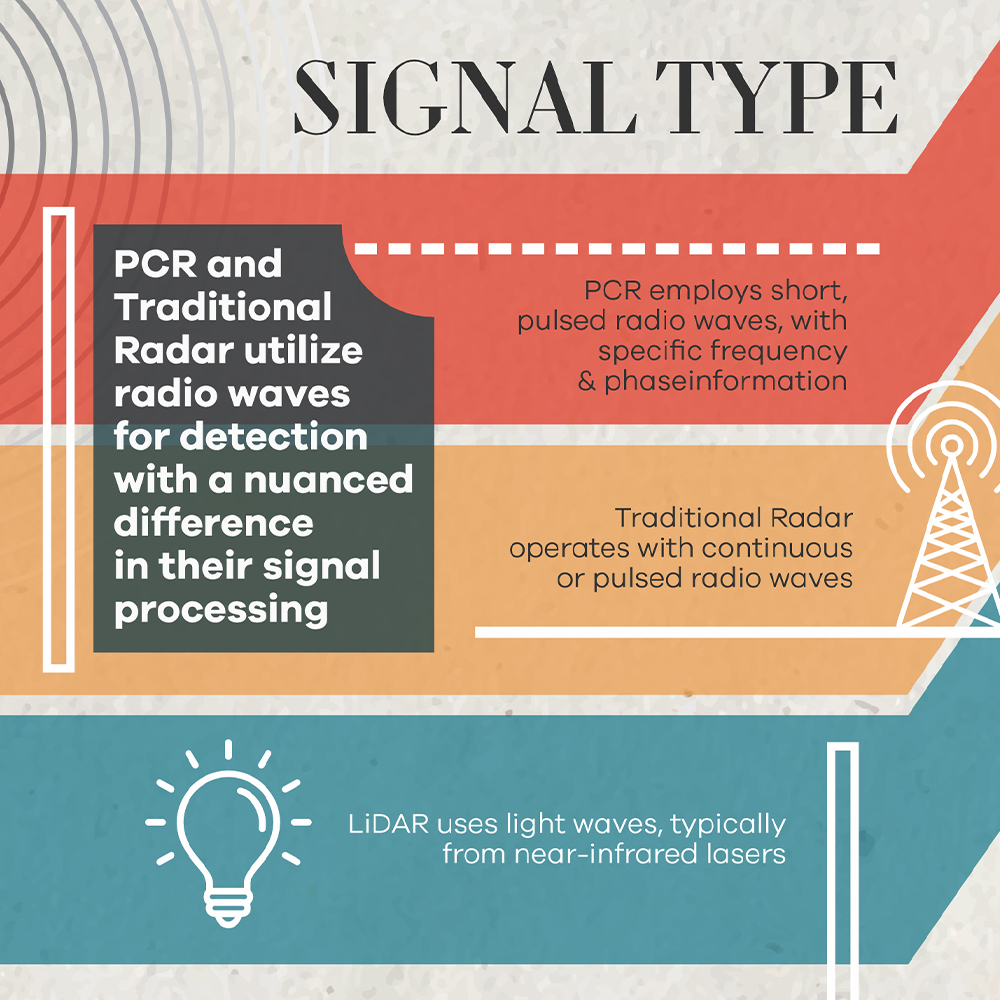
Principle of Operation: Unveiling the World
PCR and Traditional Radar share the principle of measuring the time-of-flight of radio waves to gauge distances.
- PCR leverages phase differences for improved detection and resolution.
- Traditional Radar relies on time-of-flight, without phase information, for target detection.
LiDAR mirrors this time-of-flight measurement but utilizes light pulses for precise distance mapping.
Key Differences: Ranging Beyond Range and Resolution
Range:
- PCR offers focused sensing capabilities up to several meters.
- Traditional Radar excels in extensive range detection, from kilometers to hundreds of kilometers.
- LiDAR operates effectively within a range from centimeters to hundreds of meters, suited for detailed proximity sensing.
Resolution:
- PCR provides superior detail through phase information, outperforming traditional radar in resolution.
- Traditional Radar is less effective at short ranges, where higher resolution is needed.
- LiDAR leads in resolution, thanks to the shorter wavelength of light, facilitating high precision in object identification.

Object Penetration:
- PCR can penetrate certain materials like fabrics and thin walls, offering unique applications in surveillance and object detection.
- Traditional Radar's effectiveness varies, with its ability to penetrate materials depending on the specific frequency and power used.
- LiDAR, on the other hand, struggles with material penetration as light waves are easily blocked.
Cost remains a factor as well, with PCR and LiDAR offering unique advantages in material penetration and detail, respectively, at varying cost implications.
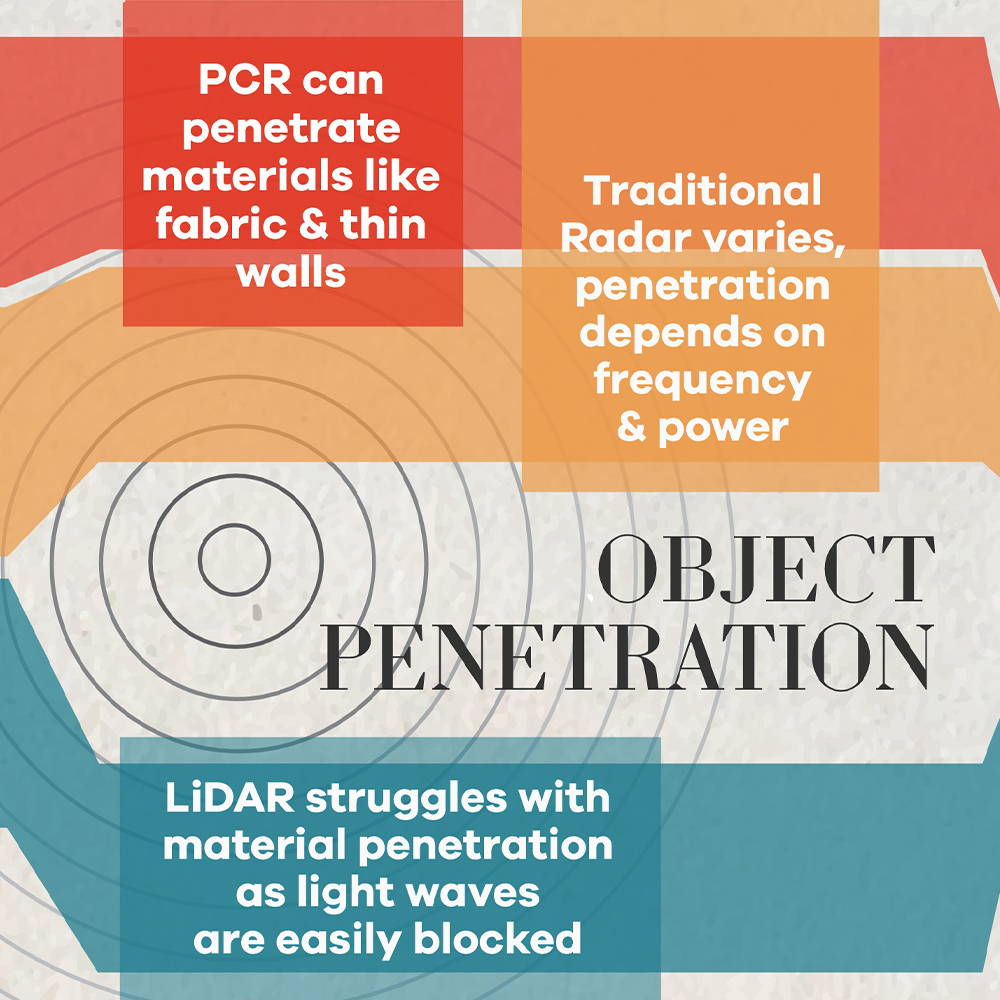
Dimensions: Fitting into the Physical World
The physical size of these technologies plays an important role in their application and deployment:
PCR: Generally compact, PCR devices are suited for small-scale applications, such as handheld devices or embedded systems in vehicles, where space is at a premium.
Traditional Radar: Varies significantly in size, from small portable units to large installations like those used in air traffic control towers. Its size is often dictated by the need for larger antennas to achieve long-range detection.
LiDAR: The size can range from small modules integrated into smartphones and consumer gadgets to larger units mounted on vehicles for autonomous navigation. The complexity of LiDAR systems, including the need for precise optical components, often influences their size and integration challenges.
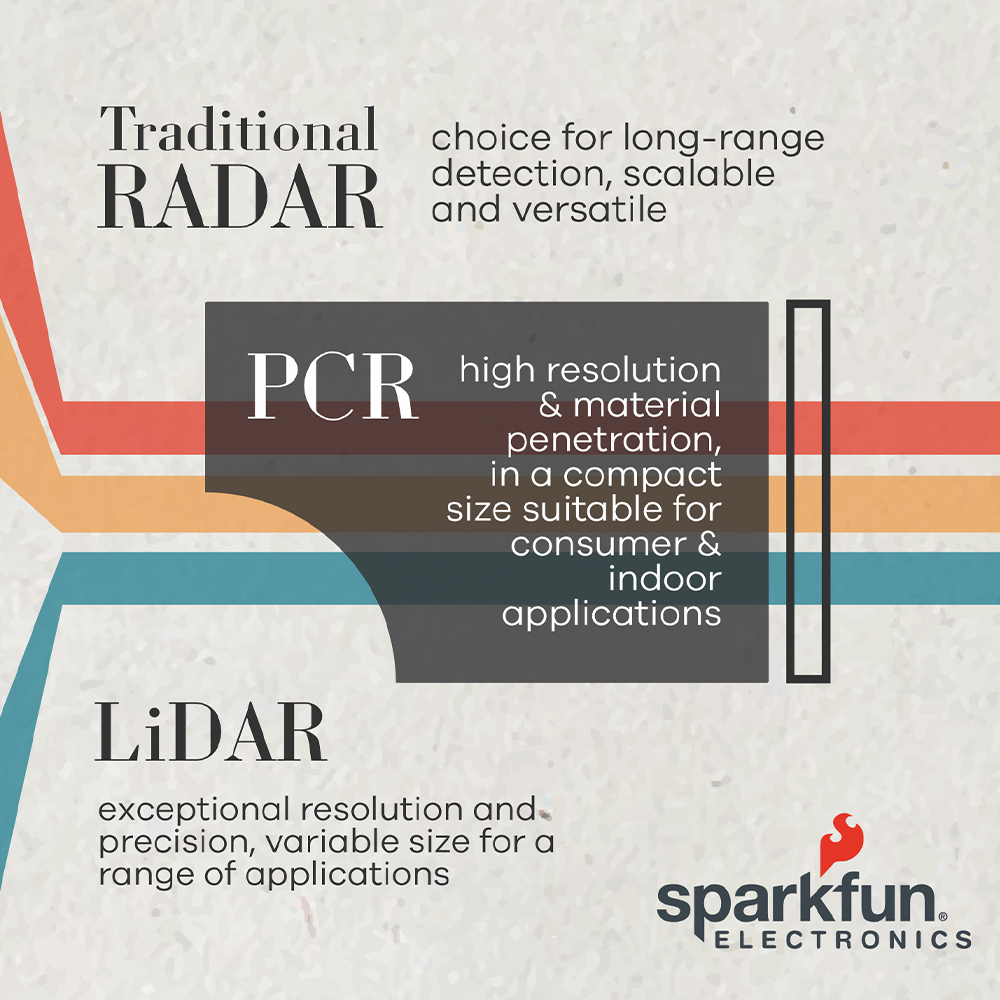
In Conclusion...
PCR is notable for its high resolution and ability to penetrate through materials, packed into a relatively compact size suitable for consumer electronics and indoor applications.
Traditional Radar is the choice for long-range detection, scalable in size from handheld devices to massive installations, versatile across various industries.
LiDAR stands out for its exceptional resolution and precision in object identification, with size variations accommodating everything from mobile phones to autonomous vehicles.
The selection between PCR, Traditional Radar, and LiDAR hinges not just on their operational capabilities but also on considerations like the available space for their integration and the specific requirements of the intended application. This comprehensive understanding aids in making informed decisions for leveraging these technologies to their fullest potential.
Inspired to use some of these distance sensing technologies yourself now that you know how they work? We have lots of products here at SparkFun that utilize some of the above tech, the newest being our Pulsed Coherent Radar Sensor from Acconeer. Check some out below!
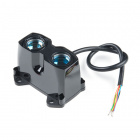
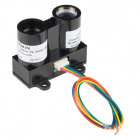
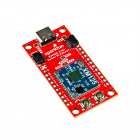


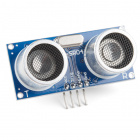
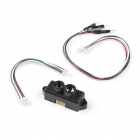
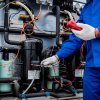

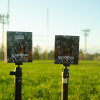
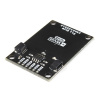






I know that radar to measure speed (such as police use to check the speed of vehicles) uses doppler shift to measure the speed. The thought occurs to me that assuming the unit in question can measure distance with high enough frequency, a modern processor can compare distances over a short amount of time to determine speed.
In particular, I've been toying with the idea of using a LIDAR unit to measure the speed of cars passing by my property, and maybe setting up a sign to SLOW DOWN if they're much over the speed limit. There are a lot of kids in my residential neighborhood, and all too many "lead footed" drivers...
Wow great blog!